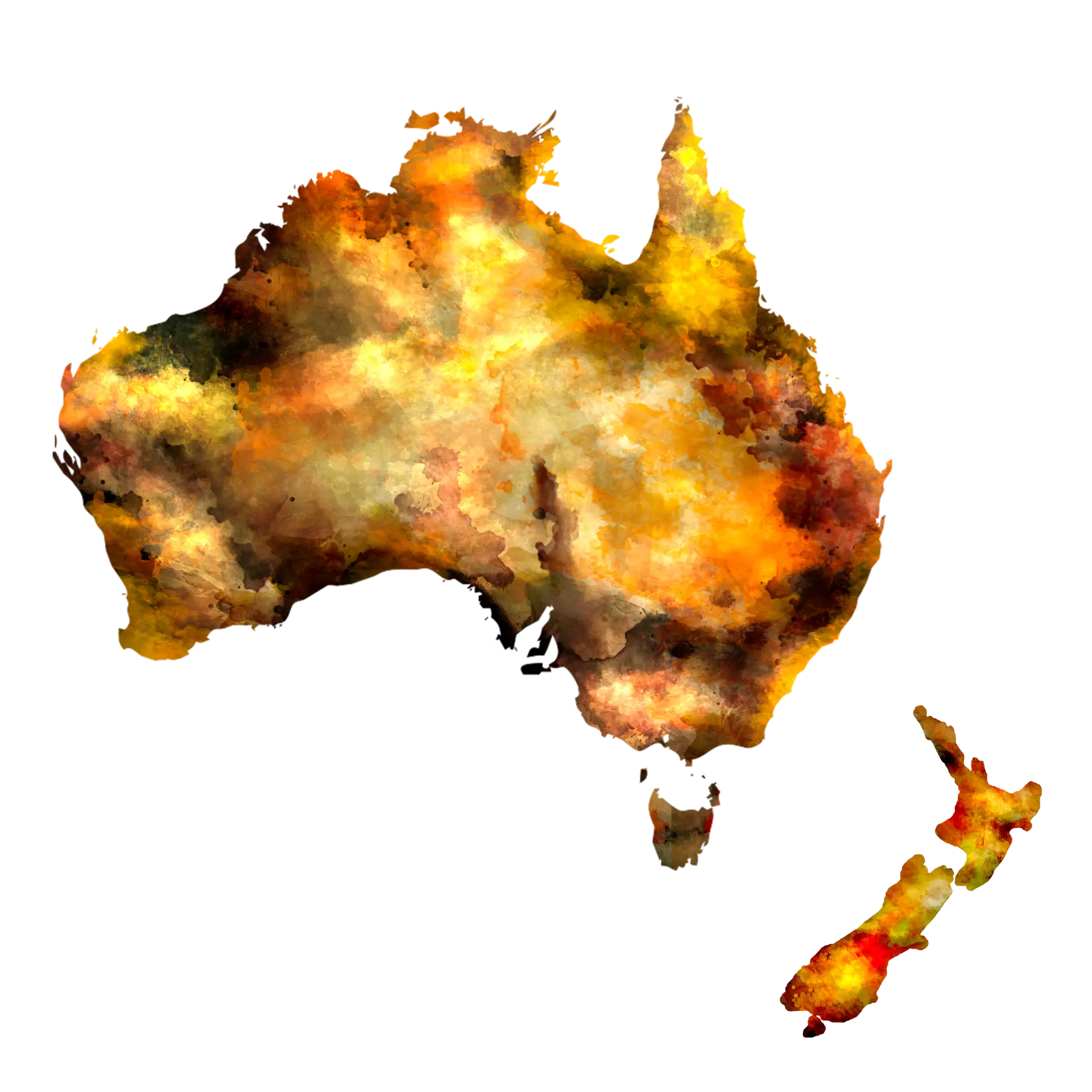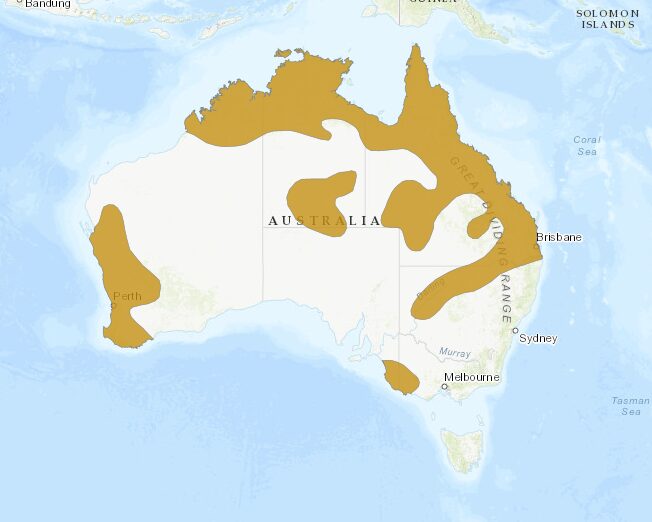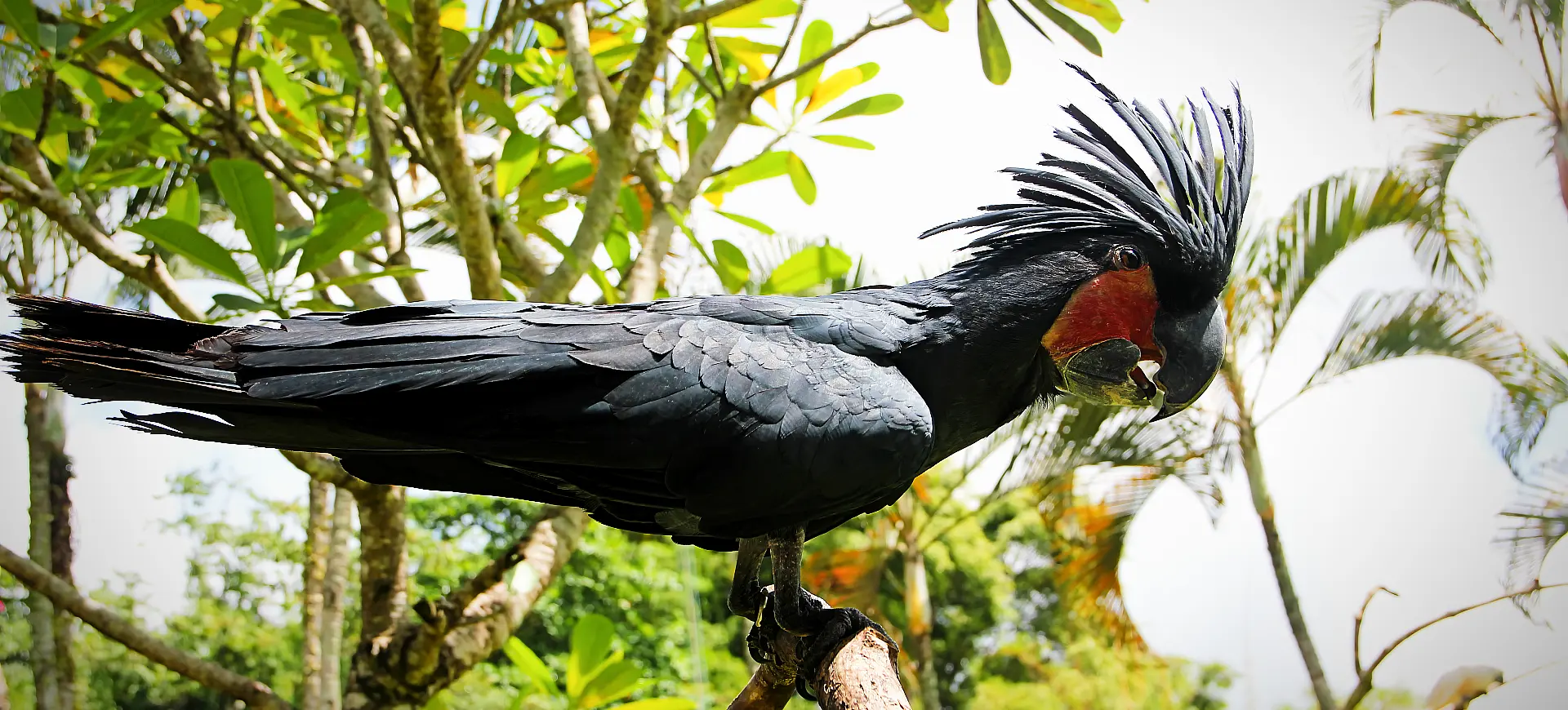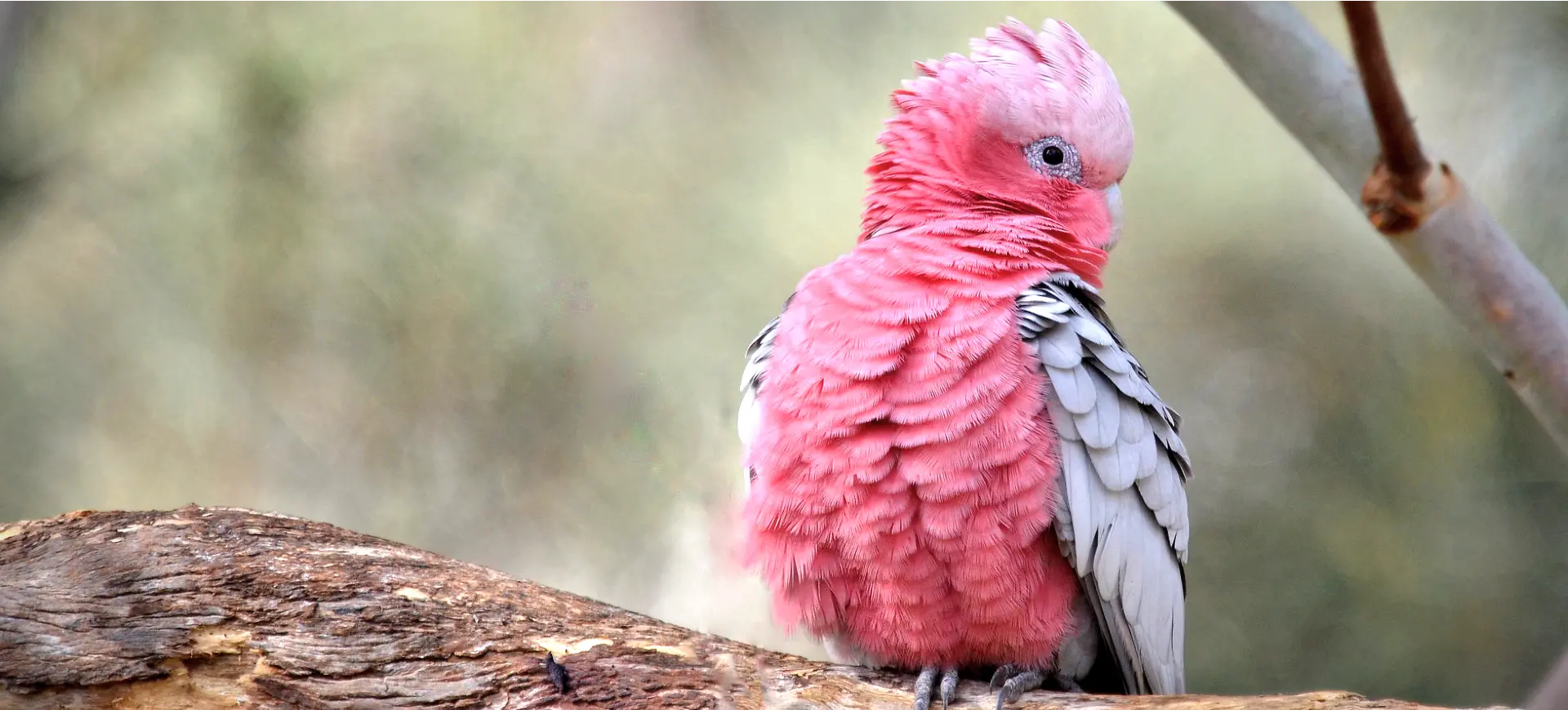Overview
The Red-tailed Black-Cockatoo, a striking bird native to Australia, is known for its glossy black plumage and distinctive red tail panels, which are more pronounced in males. This species exhibits significant sexual dimorphism, with females displaying spots and bars of yellow and orange across their body and tail, contrasting with the males’ uniform black coloration. They are large birds with powerful beaks adapted to their diet, primarily consisting of native seeds, particularly those of eucalyptus, banksia, and hakea species. The bird’s loud, distinctive call, a characteristic “creak-creak-creak,” echoes through their habitats, communicating amongst individuals and groups.
Inhabiting a range of wooded environments across Australia, the Red-tailed Black-Cockatoo’s habitat preferences can vary greatly from one subspecies to another, ranging from arid deserts to tropical rainforests. Their adaptability to different ecosystems is a testament to their evolutionary success, allowing them to exploit various food sources and nesting sites. This bird is highly social, often seen in flocks that can number in the hundreds, especially in abundant food areas. Such social structures facilitate complex interactions, including communal roosting and cooperative foraging behaviors that are essential for their survival.
Conservation concerns for the Red-tailed Black-Cockatoo have escalated in recent years due to habitat destruction, fire regime changes, and illegal pet trade poaching. Despite these challenges, the species remains a resilient and iconic symbol of the Australian bush. Efforts to conserve their habitat and ensure sustainable populations are crucial, involving habitat restoration, research, and community engagement. Understanding the ecological role of this species is key to mitigating the impacts of land use change and ensuring the longevity of their populations across Australia.
Taxonomy
Kingdom
Phylum
Class
Order
Family
Genus
Species
Sub Species
Type
Current distribution:
The Red-tailed Black Cockatoo is distributed across various regions of Australia, from the northern tips of Queensland to the southwestern corners of Western Australia. Each subspecies has adapted to specific environmental conditions, resulting in a patchwork distribution that covers a significant portion of the continent. While some populations are stable, others are under threat due to habitat loss and fragmentation.
Conservation efforts have focused on protecting the critical habitats of the more vulnerable subspecies, particularly those affected by agricultural expansion and urban development. Monitoring population trends and habitat conditions is crucial for understanding the challenges faced by each subspecies and implementing targeted conservation strategies. The cockatoo's ability to thrive in various habitats offers hope for its future, provided that efforts are made to mitigate the impacts of human activity on their natural environments.
Physical Description:
The Red-tailed Black-Cockatoo is easily identified by its predominantly black plumage and the striking red tail feathers found in males, which contrast sharply with the females’ barred yellow and orange tail patterns. Both sexes have a large crest that can be raised or lowered depending on their emotional state, adding to their expressive nature. The bird’s strong, curved beak is perfectly adapted for cracking open hard-shelled nuts and seeds, a testament to their specialized feeding habits. The differences in coloration and size between genders make it one of the easier parrot species to see visually.
Females differ in color and are slightly smaller and less robust than males, with intricate patterns of spots and bars across their bodies, lending them a distinctive appearance that aids camouflage. Juvenile Red-tailed Black-Cockatoos resemble females but have a duller overall appearance and lack the vivid red tail panels seen in adult males. Their large, broad wings and strong flight muscles are adapted for long-distance travel, allowing them to cover extensive areas in search of food and water. The robust legs and zygodactyl feet enable them to perch securely on branches and manipulate food items, showcasing their adaptability to forested environments.

Lifespan: Wild: ~25 Years || Captivity: ~50 Years

Weight: Male: 1.9-2.9 lbs (870-1,310 g) || Female: 1.8-2.6 lbs (820-1,190 g)

Length: Male: 24-26 in (60-65 cm) || Female: 22-24 in (55-60 cm)

Wingspan: Male & Female: 39-43 in (100-110 cm)

Top Speed: 45 mph (72 km/h)
Native Habitat:
The Red-tailed Black Cockatoo inhabits a wide range of wooded environments across Australia, reflecting the diversity of the continent’s ecosystems. From the tropical rainforests of Queensland to the arid regions of Western Australia, the different subspecies’ habitat preference varies significantly. This adaptability has enabled them to occupy regions with varying degrees of rainfall and vegetation types, making them a widespread species nationwide.
Their dependence on specific tree species for feeding and nesting highlights the importance of these ecosystems for their survival. The cockatoos are particularly affected by the loss of old-growth forests, which provide essential nesting hollows that are scarce in younger forests. Conservation of these habitats is vital for preserving the Red-tailed Black-Cockatoo, emphasizing the need for sustainable forest management practices that protect both the trees and the biodiversity they support.
Biomes:
Biogeographical Realms:
Continents:
Countries:
Diet:
Diet & Feeding Habits:
The Red-tailed black cockatoo’s diet is predominantly composed of seeds from native Australian trees, including eucalyptus, banksia, and hakea species. Its powerful beaks are adept at breaking open tough seed pods, allowing it to access nutrients that many other species cannot. In addition to seeds, these cockatoos occasionally consume fruits, nuts, and insects, supplementing their diet according to seasonal availability and regional differences.
Feeding occurs both in trees and on the ground, where the birds can be observed foraging in flocks, especially in regions where food is abundant. The social nature of their feeding behavior not only aids in locating food sources but also protects predators. During the breeding season, males play a significant role in feeding the females and their young, showcasing parental care crucial for the chicks’ survival. The adaptability of their diet is a key factor in their survival across varied environments, from arid landscapes to lush forests.
Mating Behavior:
Mating Description:
The Red-tailed Black-Cockatoo forms monogamous pairs that often remain together for many years, if not for life. Their breeding season varies across their range, generally aligning with the availability of food, which is crucial for raising their young. Nesting typically occurs in large tree hollows, which are in short supply, making competition for these sites intense among bird species. The female lays one to two eggs per breeding season, which she incubates while the male feeds.
The long breeding cycle and low reproductive rate of the Red-tailed Black-Cockatoo are challenges for population growth. Chicks are altricial, requiring extended care from both parents until they are ready to fledge, which can take several months. This extended parental investment ensures the offspring have a higher survival rate but also means that the birds breed less frequently. The strong pair bonds and cooperative parenting behavior are essential for the success of their offspring, reflecting the species’ adaptation to their environment.
Reproduction Season:
Birth Type:
Pregnancy Duration:
Female Name:
Male Name:
Baby Name:
Social Structure Description:
Red-tailed Black-Cockatoos exhibit a complex social structure, with individuals participating in both small family groups and larger flocks. These flocks can consist of hundreds of birds, especially in abundant food areas, facilitating social interaction and communal roosting. The strong pair bonds seen in breeding pairs are a fundamental aspect of their social dynamics, with paired birds often seen foraging and flying together.
Within these social groups, communication is key, with a range of vocalizations used to maintain contact and signal alarm. The birds also engage in mutual grooming and share food sources, demonstrating cooperative behaviors that strengthen social bonds. This social structure enhances the birds’ ability to find food and protect against predators. It plays a role in their mating and breeding strategies, underlying the importance of social interactions for their overall survival.
Groups:
Conservation Status:
Population Trend:
The overall population of the Red-tailed Black-Cockatoo is considered stable, yet some subspecies face significant threats that have led to declines. The primary concern for these birds is habitat loss, driven by land clearing for agriculture, urban development, and altered fire regimes that affect the availability of nesting sites and food sources. Illegal trapping for the pet trade also poses a threat, although to a lesser extent than habitat issues.
Conservation programs focusing on habitat restoration and protection are crucial for at-risk subspecies. Efforts to install artificial nesting boxes have been somewhat successful in areas with scarce natural hollows. Public awareness campaigns and legal protections have been implemented to reduce poaching and promote conservation. The ongoing monitoring and research into the birds’ ecological needs are essential for developing effective conservation strategies and ensuring the sustainability of their populations.
Population Threats:
Habitat destruction and modification are the primary threats to the Red-tailed Black Cockatoo, particularly for subspecies with limited ranges or specialized habitat requirements. Logging, agricultural expansion, and urbanization have significantly reduced available nesting sites and food resources. Altered fire regimes, which can either destroy habitats outright or change the ecological balance of the environments these birds rely on, further exacerbate the situation.
Illegal wildlife trade is another threat, though its impact varies across the bird’s range. The species’ striking appearance and the novelty of owning such a bird contribute to its desirability as a pet, leading to poaching from the wild. Addressing these threats requires a multi-faceted approach, including habitat protection, legal enforcement against poaching, and community engagement to promote conservation efforts.
Conservation Efforts:
Conservation efforts for the Red-tailed Black-Cockatoo include habitat preservation, rehabilitation programs for injured or displaced birds, and research into their breeding biology and ecology. Protected areas and conservation reserves are crucial in safeguarding key habitats, while reforestation projects aim to restore degraded lands. The installation of artificial nesting hollows has also been explored as a way to mitigate the shortage of natural nesting sites.
Community-based conservation initiatives have been effective in raising awareness and reducing illegal trapping. Collaborations between conservation organizations, government agencies, and Indigenous communities are essential for protecting this species, highlighting the importance of integrating traditional knowledge with scientific research. Ongoing monitoring and adaptive management strategies are crucial to address the changing conservation needs of the Red-tailed Black-Cockatoo and ensure the long-term viability of its populations.
Additional Resources:
Fun Facts
- Red-tailed Black-Cockatoos can use their left or right foot with equal skill to hold food while eating.
- Their strong beaks can crack open even the toughest seeds, showcasing an impressive adaptation to their diet.
- The red tail feathers of the males are used in Aboriginal ceremonial dress and storytelling.
- They have one of the longest lifespans of parrot species, living up to or beyond 50 years in the wild.
- The species are crucial in their ecosystems as seed dispersers and pollinators.
- Red-tailed Black-Cockatoos have been observed using tools to assist in food gathering.
- Their flight silhouette is distinctive, with slow, deep wingbeats and a gliding motion.
- Juveniles who go through several molts take several years to acquire the full adult plumage.
- They have a varied repertoire of calls, including alarm, contact, and flight calls.
- Conservation efforts for the Red-tailed Black-Cockatoo also benefit many other species that share their habitat.












